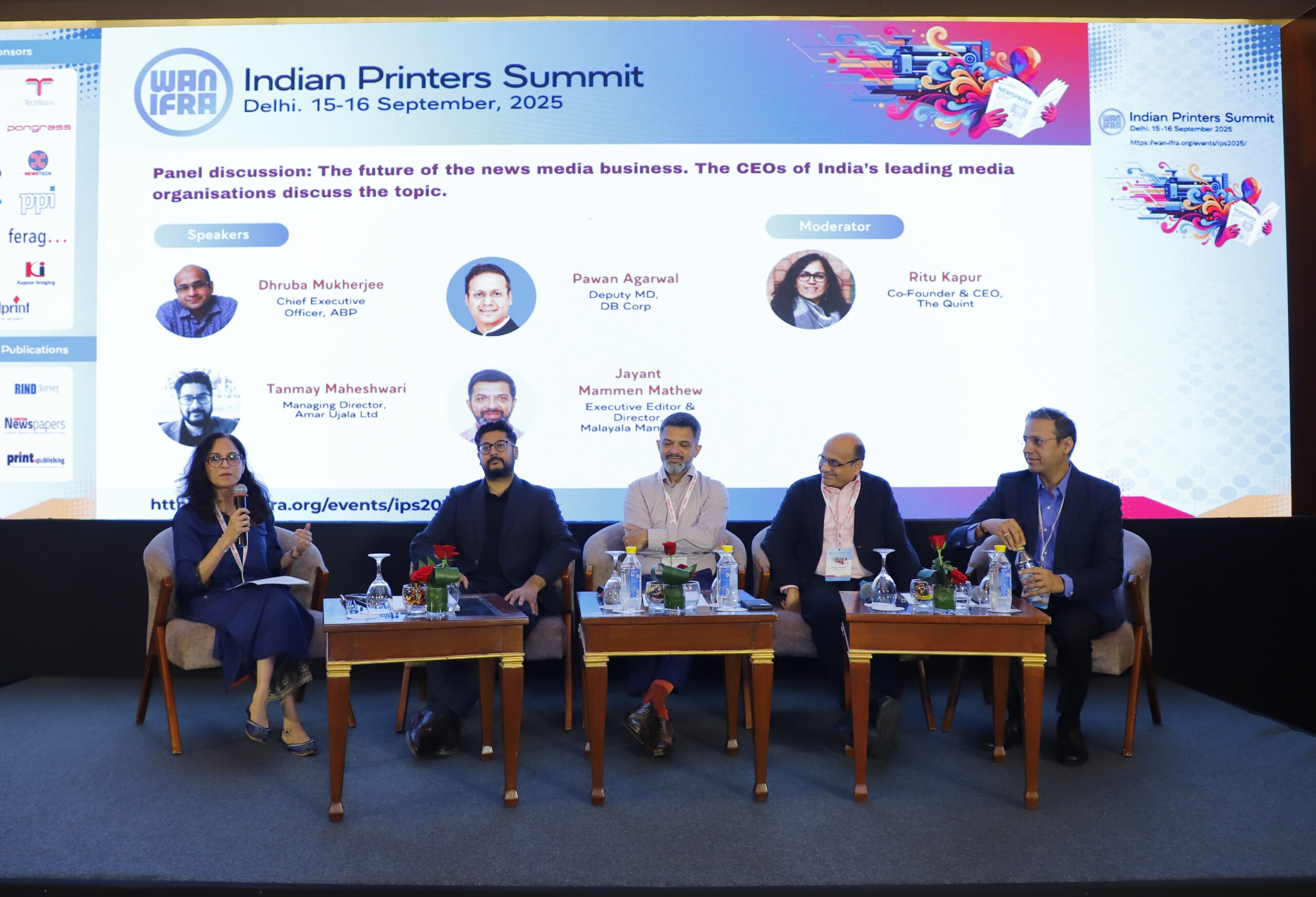Ritu Kapur, Co-founder and CEO of The Quint, started the session at Indian Printers Summit 2025 with two “confessions.” First, even though she runs a digital-only news organisation, she actually starts her day with three print newspapers.
Second, back when The Quint was launched in 2015, she was convinced that by 2025, print newspapers would be “framed in museums and extinct, sitting amongst typewriters and telegrams.”
“Clearly, that’s not how it’s panned out,” she said.
This contradiction largely defines India’s media landscape in 2025: while much of the world has seen print decline, print publishers in India continue to thrive and adapt their businesses with the changing times.
A big reason for this is the hyperlocal model that many Indian publishers have embraced.
Being hyperlocal before it was cool
In the early 2000s, when Western news organisations first began to talk about being “hyperlocal”, the Indian news industry “had already started its journey on hyperlocal,” said Pawan Agarwal, Deputy MD of DB Corp.
“Each one of our publications has thousands of reporters on the ground. We are trying to cover as small as possible towns. We are trying to go deep into our circulation [areas],” he said.
This is a sign of the fact that many Indian newspapers recognised early that their true strength lies in serving local communities. This local model is supported by a robust distribution network in the country, thanks to which almost all newspapers are home-delivered every morning.
The local approach extends to advertising. While Western media lament the decline of classified advertising – primarily in their local markets – local advertising continues to play a major role in India. It’s cheap individually but allows advertisers to cater audiences in specific areas.
Local advertising is also a reason why Indian press is able to compete with online giants, Agarwal said: “Because the internet is not able to give you a very, very local advertising option.”
The community connection
Part of the hyperlocal approach is an editorial focus on local issues that also drive societal impact, said Jayant Mammen Mathew, Executive Editor and Director of Malayala Manorama Company.
“Editorially, the newspaper plays a larger role in the community as opposed to what a digital site can do, or what a TV channel can do. This, only a newspaper can do, especially regional newspapers, when they can take up local issues,” he said.
This gives newspapers a “community building” role, he said.
“Obviously a lot of people consume local content online also,” said Tanmay Maheshwar, Managing Director of Amar Ujala Ltd. But compared to the somewhat chaotic world of online information, a curated print product builds trust and brings the reader more value, he said.
Hyperlocal advertising advantage
That trust also translates into economic impact, and publishers are well-placed to mine local advertising, said Dhruba Mukherjee, CEO of ABP Pvt Ltd.
Local advertising rates are generally lower, but a typical local advertiser is not looking to cover the entire state or the nation. “Hence, they are paying a rate which is proportionate only for the local edition,” he said.
The local angle is also impacting the editorial approach. Malayala Manorama’s Mathew said their content is now more tightly edited, with a focus on “utility” stories.
There’s also a big push on exclusivity: “What is on our front pages cannot be what’s on television news the previous night,” he said.
From reach to impact
With the rise of digital alternatives, print’s role in the Indian news ecosystem is being redefined.
Traditionally, print was a “reach-based medium,” said Maheshwar, as print was “a unique way to reach” isolated towns and villages.
But with the expansion of mobile phones and cellular networks, “that problem has been completely solved.”
This means that print’s future is as an “impact-based medium,” which involves targeting readers that are more educated and affluent, who are also a more attractive target audience for advertisers, he said.



